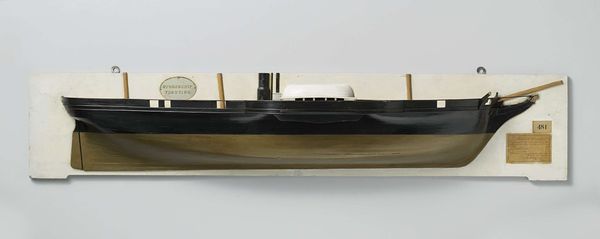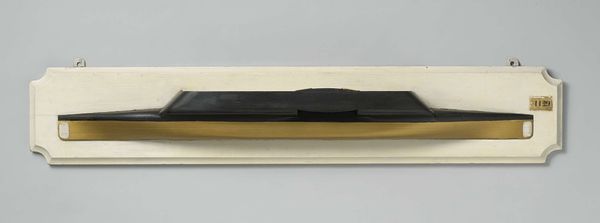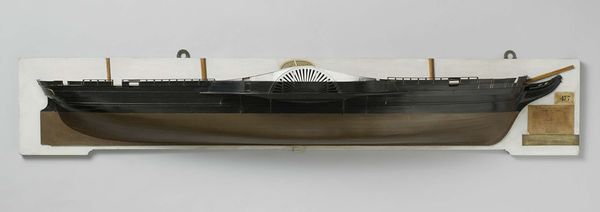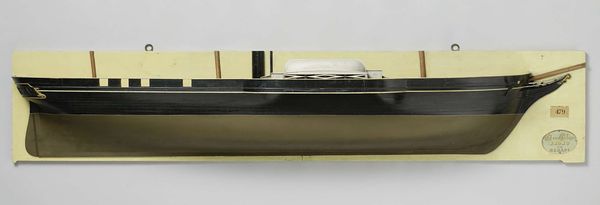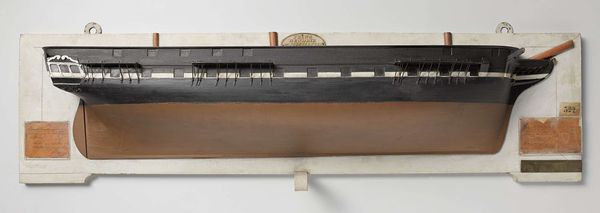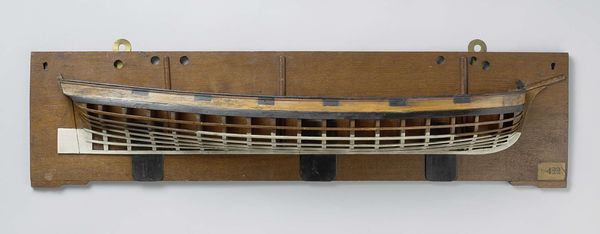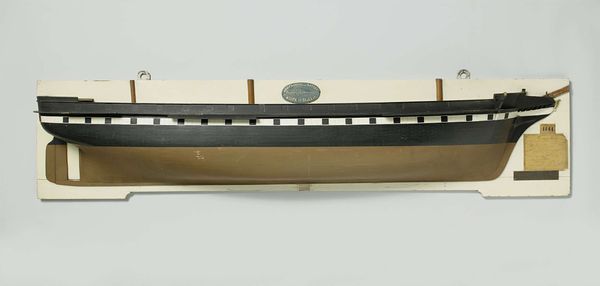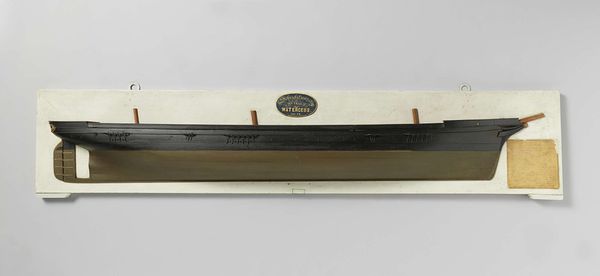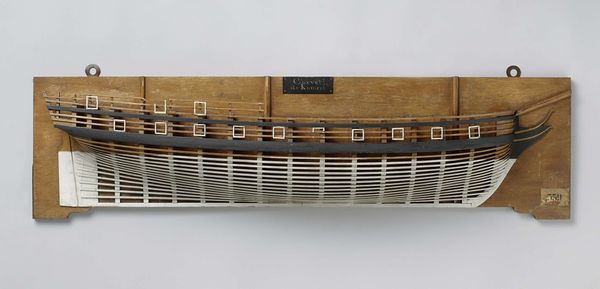
sculpture, wood
#
geometric
#
sculpture
#
wood
#
history-painting
Dimensions: height 28 cm, width 142.5 cm, depth 18.5 cm
Copyright: Rijks Museum: Open Domain
Curator: Here we have a fascinating object, a "Half Model of a Paddle Steamer" created around 1837 at Rijkswerf Vlissingen. It’s meticulously crafted from wood, presenting just one side of the ship. Editor: Immediately, I’m struck by its solemn air, its almost funerary stillness. It reminds me of votive offerings in ancient Egyptian tombs. Curator: It served a very practical purpose, I suspect. Half models like these were essential for shipbuilders. It’s basically a blueprint in three dimensions, informing the construction process of the vessel's hull. Its streamlined form must have embodied early modern aspirations of progress and industrial prowess. What social narratives might it also carry? Editor: It speaks to a very particular time in history. Note how the paddles are rendered as an almost classical motif, the fan shape visually alluding to ideas of progress, a radiating symbol of movement and transition—evoking Hermes' winged sandals or the spokes of a great wheel of fortune. It contrasts with what the ship likely hauled or what it became. It reflects a complicated imperial past. Curator: Absolutely, thinking of how advancements in maritime technology impacted global trade and colonialism raises difficult questions about agency and ethics. But there's a certain functional elegance in its construction, almost minimalist despite its ornamentation. Editor: You are right to notice. Though the execution is refined, the inherent symbolism overrides this perfection. The very fact that it’s *half* a model creates a kind of broken or incomplete image. Does that imperfection allude to potential ship disasters or sunk imperial desires? It haunts and yet, also offers insights. Curator: So while it signifies progress and ambition, it also suggests the fragility and potential downfall associated with those aspirations? It reminds us that objects contain multi-layered meanings. Editor: Exactly. This isn't just a pretty ship; it is also an epitaph and emblem representing shifting powers. Curator: Considering this context changes how we engage with this vessel. It invites an ethical consideration of technological advances and their impact on human lives. Editor: Agreed. Approaching historical artifacts as conduits of difficult truths offers powerful ways of learning from our shared history.
Comments
No comments
Be the first to comment and join the conversation on the ultimate creative platform.
